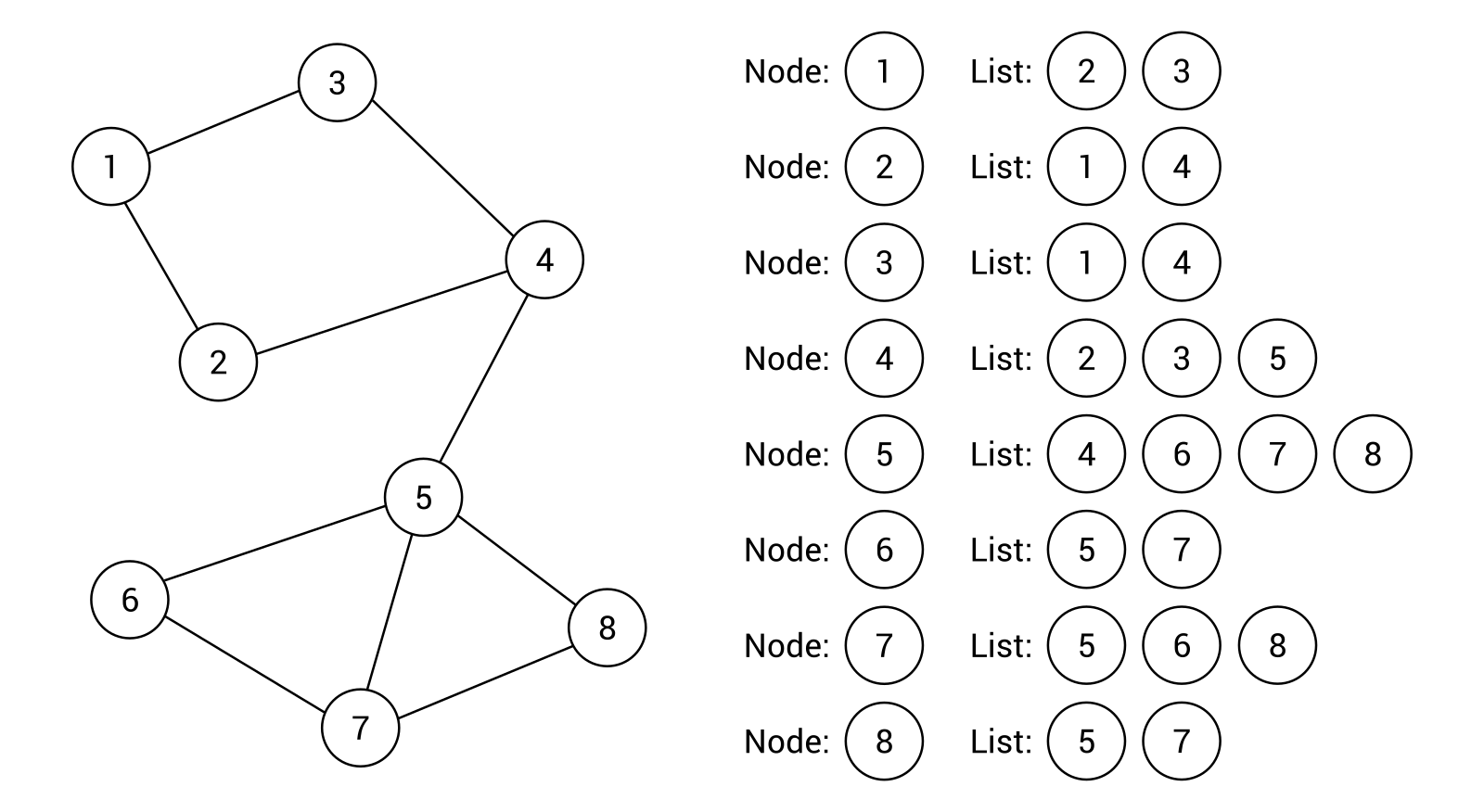The first approach requires you to extend the data of a node by specifying a list of its neighbors. Thus, you can easily get all neighbors of a given node just by iterating through the adjacency list of a given node. Such a solution is space-efficient, because you only store the data of adjacent edges. Let's take a look at the following diagram:

The example graph contains 8 nodes and 10 edges. For each node, a list of adjacent nodes (that is, neighbors) is created, as shown on the right-hand side of the diagram. For example, the node 1 has two neighbors, namely the nodes 2 and 3, while the node 5 has four neighbors, namely the ...

